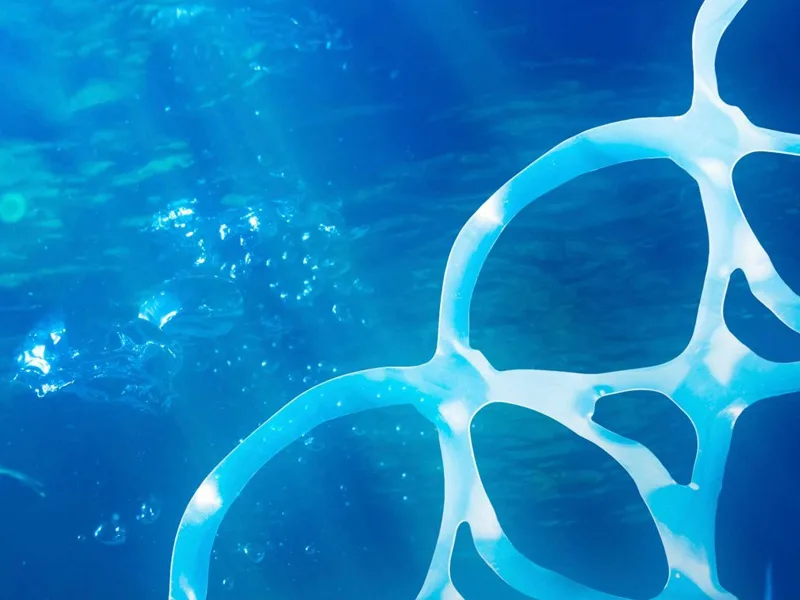News
“Fast Plastic:” Evaluating Fast Fashion and Wastewater as a Source for Marine Microplastics

Lucy Manlick & Emma Iverson, Mount Holyoke College & Macalester College“Fast Plastic:” Evaluating Fast Fashion and Wastewater as a Source for Marine Microplastics in the Rachel Carson NERR
Location and Background
Today we anchored near the Rachel Carson National Estuarine Research Reserve (NERR) in Beaufort, North Carolina. We could not see the estuary itself as it was blocked by a barrier island: however, during our shore one component we researched the NERR and learned about its history and uses.
For those at home who do not know what an estuary is, it is a location where freshwater and saltwater meet. This NERR is named for Rachel Louise Carson, who conducted research at the site in the 1940s. Today, many universities and teachers use it as an outdoor classroom and as an outdoor laboratory to study coastal interactions. The site is a nationally protected estuary because of its pristine intertidal estuarine-marsh system which is representative of the mid-Atlantic. The reserve itself includes 2,134 acres and includes creeks, tidal flats, sound waters, and marshes that occur within five islands (NOAA Rachel Carson NC NERR Management Plan).
Evaluation of Contamination: Marine Debris and Microplastics as a Wastewater Contaminant
Like many marine ecosystems, the Rachel Carson NERR has a continuous marine debris contaminant issue. Since 2007 they have removed over 15,000 pounds of debris (NOAA Rachel Carson NC NERR Management Plan). While they have removed much debris including plastic from the NERR, they can only isolate material using the naked eye.
Based on research in microplastics completed by the International Union for Conservation of Nature we expect that there is even more marine debris contaminating the waters in the Rachel Carson Reserve that is invisible without a microscope: namely microplastics. Microplastics by definition are plastic particles and fibers five millimeters or less in size (Boucher, Friot, 2017) – smaller than your pinky fingernail. Some microplastics enter the environment at this size (primary microplastics), whereas others enter into the environment as microplastic and are degraded into microplastics (secondary microplastics) (Napper, Thompson 2016).
You may be asking yourself how this microplastic is getting into the marine environment, or how you could be contributing to this issue. Current research efforts are identifying multiple avenues of microplastic contamination; and one such avenue is through the washing and manufacturing of textiles and clothing.
Washing:
- Different forms of detergent cause the release of more or less microfibers throughout a wash cycle. Powdered detergent has been found to cause more microplastic to be released in a single wash as compared to liquid detergents.
- Different temperature and strength washes also effect the release of plastic particles. High temperature and high strength/speed washes cause increased microplastic release.
Manufacturing:
- There are two major production methods in the textile and clothing industries. One is called “fast fashion,” where low-quality, poorly made clothes and textiles are produced in large amounts using cheap synthetic fibers. The other is a slower, more arduous method which uses higher quality and higher cost materials and produces longer-lasting, well-sewn clothes and textiles.
- Fast fashion clothes and textiles release more microfibers when produced and when washed due to the low quality of the synthetic fibers, the sewing, and the overall product.
Every time you wash your clothes, microplastics are released into your local wastewater system. Currently, there is no government standard or filter requirement to remove microplastics from wastewater at the consumer level or in wastewater treatment plants, so large quantities of microfibers enter the environment through wastewater every day.
NERRs and marine reserves are not exempt from the effects of wastewater contamination. The Rachel Carson NERR is bordered by the Beaufort Wastewater Treatment Plant. This facility discharges into Taylor’s Creek, one of the freshwater tributaries located in the estuary system of this NERR. This wastewater discharge poses a pollutant risk to four of the site’s islands (NOAA Rachel Carson NC NERR Management Plan).
So why should you care?
There are many reasons why we all need to care about plastic debris: especially microplastics. Firstly, plastic poses a risk to marine life. Due to the size and shape of many plastics, they can be confused for prey by larger organisms and are eaten and ingested. This can result in the starvation of marine organisms (the plastic leaves no room for real food in their guts and they starve). Plastic debris can also cause entanglement of marine organisms resulting in drowning or strangulation; one example of this is the entanglement of whales and dolphins by ghost nets underwater, which prevents them from surfacing for air.
Another reason why we need to care about plastic pollution is because plastics, as they break into smaller pieces, release additives and toxins into their environment. Studies have found that these chemicals are endocrine disruptors which can affect wildlife and, potentially, us humans.
Furthermore, when plastic is ingested by organisms, it can remain in their tissues and bodies. Then, when these organisms are eaten, their predators take in the cumulative plastic amounts. This effect amplifies throughout a food web, with top predators containing the most plastic. This poses a concern for humans, because we eat. you guessed it, top predators.
What can YOU do?
There are many things that we can do both individually and as a society to decrease the amount of microfibers released into the environment. Below are
some of the things you can do to make a difference:
- Use liquid detergent and cold wash cycles when cleaning your clothes.
- Add a filtration ball/filter to your washer to remove microplastics from your wastewater
- Push for the implementation of wastewater treatment plans to remove microplastics from wastewater: either as filters built into washing machines, or as filtration systems in the treatment facilities.
- Raise awareness! The more people know about an issue, the more people are working to make an effort
Contact: Douglas Karlson, Director of Communications, 508-444-1918 | [email protected] | www.sea.edu